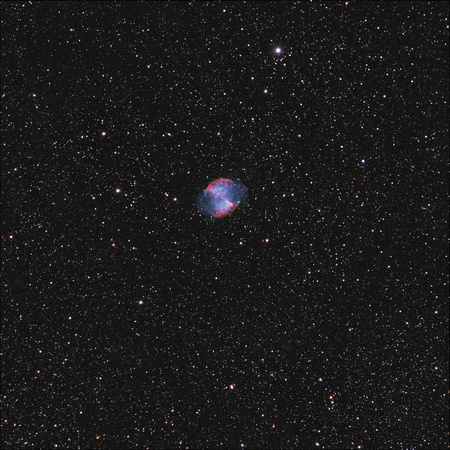SBIG ST-4000XCM6x10minImager Temp -10CAPM/TMB 130/780Field Flattener
Full Frame
Link to Larger JPEGTaken widefield to accentuate the starfield as much as the nebula. This is one of my favorite objects, and I really prefer to show the beautiful starfield with it.
Clouds ruined the chance to get more subexposures.
M27 (NGC 6853), the "Dumbell Nebula" in Vulpecula is the first planetary nebula discovered and is a great example of a gaseous emission nebula that forms when a star begins to run out of fuel and expels it's outer layers (planetary nebula). The glow is from the intense emission of ultraviolet radiation from the central star exciting the surrounding gas. The central star, a
white dwarf, is estimated to have a radius which is 0.055 solar radii which gives it a size larger than any other known white dwarf. The central star mass is estimated to be 0.56 solar mass, is quite bright at mag 13.5, and extremely hot at about 85,000 K (so the spectral type is given as O7 in the Sky Catalog 2000). K.M. Cudworth of the Yerkes Observatory found that it probably has a faint (mag 17) yellow companion at 6.5" separation.
M27 is 1,200 light-years distant and is only about 3000-4000 years old.
June 20, 2009


